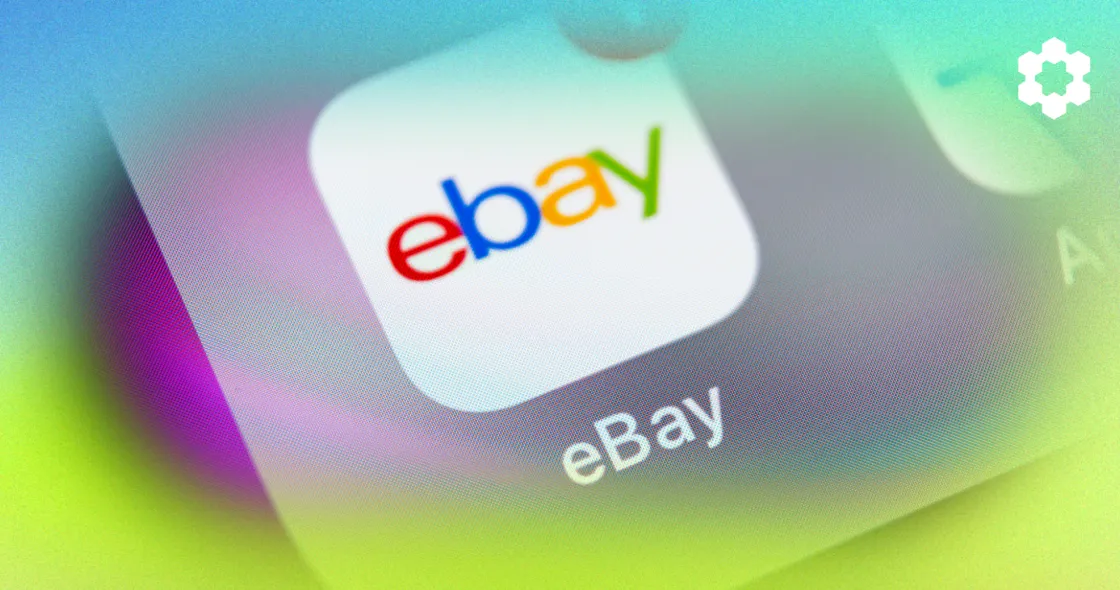It’s a jungle out there in the ecommerce space, and Amazon’s competition continues to get fiercer. The company boasts over 2 million active sellers on its platform, but shares them among 200 million unique visitors per month in the US alone, or 100 visitors per seller. This has pushed many brand owners to expand into new ecommerce platforms such as Walmart, which recently surpassed eBay for the #2 position.
And while Walmart.com has about half as much traffic as Amazon (120 million monthly visitors), it only has about 135,000 registered sellers, or 889 visitors per seller. Many brand owners see this as an untapped gold mine, and they’re right. Walmart has already established itself as a legitimate alternative to Amazon, even though it’s nowhere close to its saturation just yet.
But even with all that said, is Walmart really the next frontier of ecommerce for Amazon sellers? Is it the gold mine everyone in the space is calling it and a savvy move for sellers looking to scale?
My short, simple answer is a resounding YES. When it comes to Amazon sellers using Walmart, the juice is most definitely worth the squeeze, and below, you’ll see exactly why. But, there are a few factors and differences between the two marketplaces that you should consider before making the move to Walmart.
Are Walmart’s Fees Better Than Amazon’s?
The two main factors to judge selling fees are, 1.) fixed monthly fees, and 2.) percentage-based referral fees. Amazon charges $39.99 to maintain a professional seller account, regardless of how many items you sell. Walmart, on the other hand, charges no annual fee, and no product listing fee, making it – in this case – the clear winner.
Walmart and Amazon both charge a referral fee on every item that is purchased, of course, with a different percentage based on the category of the item. The majority of categories range from 8% to 15%, with some items having higher or lower percentages.
Check both of their lists carefully, because the fees for a given product are not always the same on both platforms. For example, selling books on Amazon carries an 8% fee, whereas Walmart’s seller fee is 6%. It also works the other way, with the fee for apparel and shoes at 15% on Amazon, but 17% on Walmart.
Although Walmart has the advantage of no monthly fees, the costs aren’t different enough to abandon either platform. In fact, it’s a good reason to expand into both marketplaces.
What Are Walmart’s Customer Demographics Compared to Amazon’s?

A large-scale survey of shoppers in 2019 reveals some interesting statistics about the shoppers at both retail giants. Coincidentally, the average shopper on both platforms is a 46-year-old white woman.
Where Walmart and Amazon shoppers strongly differ, however, is in household income. According to Business Insider, 30% of Walmart shoppers earn over $100,000 per year, compared to 37% of Amazon shoppers. As another coincidence, these figures reverse for annual incomes under $50,000, with 37% of Walmart shoppers in this category, and only 30% of Amazon shoppers.
This primary difference in demographics leads to some significant differences in policy and philosophy.
“Everyday Low Prices” Is More Than Walmart’s Catchphrase
Price consciousness has always been a focus throughout Walmart’s 60+ year history. The brand’s slogan and motto highlight low prices and savings, and its dominance in the brick-and-mortar realm came from offering cheaper prices than its competitors. Not surprisingly, the company is following that same trajectory to take over the online retail space.
Walmart’s Pricing Rules are fairly straightforward, but they have serious consequences if you don’t abide by them. Some of the highlights include:
- Products that are deemed “highly uncompetitive or unfairly priced” will be automatically unlisted from Walmart. In practice, if your item is found on Walmart or any competitor’s website for less (even if you’re not the seller there), then your pricing is considered abusive and will be flagged as “Reasonable Price Not Satisfied.”
- Sellers must bring their prices back into an acceptable level to be relisted. Automatic relisting usually takes up to 48 hours.
- Items that are priced higher than other recent offers on Walmart, but not as high as on competitor websites, will not be delisted, but they will be ineligible for the Buy Box. This is equally devastating, since 82% of sales go through the buy box.
- If Walmart’s software determines that your shipping costs are unacceptably high, your item will be delisted for “Egregious Shipping Cost,” which requires a price adjustment to reinstate your product.
- Walmart recommends incorporating shipping costs into the item price, and warns that products with low prices and high shipping costs will be ineligible for the buy box.
- In short, sellers looking to deal in high-end or luxury products will likely see much better results on Amazon, as families and individuals with more disposable income are more likely to shop on that platform. Sellers who are interested in smaller profit margins, but a greater number of sales, might find great success on Walmart’s online platform.
Walmart vs Amazon: Which Has Better Omni-Channel Convenience?
Walmart customers are not unique in their desire for convenience, but they do have access to a relatively unique shopping ecosystem. With nearly 5,000 Walmart stores operating in the US alone, 90% of Americans live within 10 miles of a Walmart store, according to the brand. The leadership has strongly leveraged this fact as part of its ecommerce strategy.
Online Walmart shoppers have the option for in-store pick-up, which can be beneficial for busy families. People may not like shopping online because they need to stay at home waiting for delivery, or their package may be left on the doorstep where it can be easily stolen. Since families have to go grocery shopping, picking up online products at the same store they buy their food is incredibly convenient and secure.
In addition to in-store pick-up, Walmart also offers in-store returns, or what the brand calls Enhanced Returns). For anybody who has ever chosen not to return a product to an online retailer because they didn’t want to deal with the return shipping process, this is a major advantage for Walmart.com. Shoppers who care about product quality and demand the ability to return inferior products are encouraged to shop with Walmart due to its omni-channel convenience.
Sellers should pay attention to the fact that Walmart shoppers are more likely to demand the highest quality and the lowest price, with the best customer service.
Walmart’s Infrastructure & Logistics Are Ecommerce Game Changers

If Walmart has one significant leg up on Amazon, it is its dependable and expansive logistics infrastructure. This is, without question, a huge asset for sellers, and could a massive game changer for the industry.
When the pandemic hit and consumers shifted hard into buying online, Amazon’s biggest hurdle was logistics and its lack of infrastructure, both of which take much longer to build than market demand. As we’ve detailed in the Carbon6 white paper, Attack of the Fee Stack, Amazon was rocked after not having the infrastructure, and continues to prepare as it rightsizes its operations.
Walrmart, on the other hand, is already prepared. The company essentially has warehousing and distribution in every small city in the U.S. (by utilizing space in its retail stores), and has already begun converting disused Super Stores into quasi-fulfillment centers, more of which can be found here: https://corporate.walmart.com/newsroom/2022/06/03/a-new-era-of-fulfillment-introducing-walmarts-next-generation-fulfillment-centers
With more warehouse square footage readily available – not to mention other resources like drivers and forklifts, loading docks, and climate controlled space, all of which have been built into the company model for years – Walmart can scale infrastructure better and faster than anyone else, making it possible for sellers to scale using Walmarts Fulfillment Services long into the future.
Amazon Vs Walmart: Product Listing Optimization
The general principles for listing optimization are very similar on both Walmart and Amazon, largely because they are the strategies that work best to encourage purchases. For example, every seller on both platforms should use high-resolution photos that clearly show the product from multiple angles, and demonstrate its benefits and features. Walmart requires at least four images, while Amazon requires only 1. That said, doing the minimum is not recommended in either case.
In terms of keywords, both levy significant weight on high-quality keywords, though in more different ways than sellers might expect. Both platforms have product titles, bullet points, and a more freeform product description, which require SEO-friendly keywords with high traffic volume. Keyword research is the seller’s responsibility, so it’s important to use tools that will give you the most useful information.
But, it’s crucial that sellers do not simply copy and paste listings from Amazon to Walmart, since they are based on two different algorithms. In fact, you may be missing sales if you do this.
To succeed with Walmart keywords,sellers must research them via Walmart’s guidelines. The only way to do this effectively is with tools like WallySmarter, which shows the most in-demand keywords, relevant variations, and the most popular keywords your competitors are ranking for, all of which will help you know which keywords to target.
One of the most significant differences between Amazon and Walmart is concise writing. Product descriptions on Walmart should have a minimum of 150 words, whereas Amazon product listings should have a minimum of 250 words. Similarly, Walmart wants product names limited to 50-75 characters for desktop readability, compared to a 200 character limit on Amazon (the full length of which sellers are encouraged to use).
The recommended naming formula for products on Walmart is as follows:
Brand + Item Name + Model Name (if applicable) + Style (if applicable) + Key Attribute + Pack Count (if applicable) + Size (if applicable)
Another significant difference for product descriptions is the use of HTML. Amazon allows basic HTML to make your listing easier to read and organize, but Walmart does not allow any HTML, so sellers should plan for required differences in their product listings when expanding into this new platform.
If you want to see exactly how Walmart instructs us to build our listings to be the most optimized, check out this handy Walmart Marketplace Listing Quality Optimization Guide. It’s important (and interesting) to note that Walmart offers up this information freely, whereas we have not seen such a simple resource and guide from Amazon.
FBA vs WFS: The Fulfillment Options at Amazon & Walmart
For FBA sellers, the Walmart Fulfillment Services (WFS) definitely appear to have their own quirks. One of the most notable features is that WFS is only available for products sold on Walmart Marketplace, and only ships within the US.
Walmart very strongly encourages sellers to opt for WFS. One of the incentives is that WFS-fulfillment is necessary for TwoDay Delivery and FulFilled by Walmart tags, both of which significantly increase product ranking and buy box wins. This makes it nearly a requirement to reach large-scale success.
Fortunately, WFS is a reasonable fulfillment system. The fulfillment fee for items is based on their weight and dimensions, though there are extra fees for apparel (+$0.50 per item) and any items priced under $10 (+$1 per item). Walmart’s WFS fee calculator will show you what you can expect to pay in both fulfillment fees and storage fees (including peak season, off-peak, and long term storage more than 12 months).
Since fees can be different depending on the product, the best thing to do for Amazon sellers is to use this Amazon FBA Calculator to see how much money you can save per unit.
Selling on Walmart vs Amazon: Is One Really Better for Sellers?

Amazon is the #1 ecommerce marketplace platform for good reason. It has the largest product catalog and the most site traffic. Around 65% of people go to Amazon by default for product research, and 71% of money spent online is on Amazon. Another significant bonus is that Amazon is much more beginner-friendly, though tools like WallySmarter are changing that.
Still, budding entrepreneurs are much more likely to have a better experience starting on Amazon, at least for now. With Walmart’s position growing larger in the ecommerce space, including its commitment to capturing more seller attention, the learning curve for sellers will continue to dwindle.
For existing, established sellers, Walmart is a very attractive prospect for growth. There’s no need to give up Amazon yet, but expanding into Walmart is a development worth considering, since the ratio of shoppers to sellers is so much better, and many of the fees are similar or better than Amazon FBA.

Tim Jordan has been an ecommerce seller since 2015, with multiple brand exits. As the Chief Strategy Officer at Carbon6, he travels the world speaking about ecommerce growth and creating free content for the entire global seller community.
For over two years, Tim has led the charge for sellers who want to maximize and simplify their success on the Walmart platform by providing industry-leading training and insights.
If you’re an FBA seller who’s looking to fortify an Amazon business with a jump to Walmart, Carbon6 can help! The newest tool to the C6 family, WallySmarter, helps sellers with product sales, keyword popularity, and optimization opportunities for product listings. Check out its intuitive dashboard and start simplifying the work of operating, optimizing, and scaling your Walmart business.








